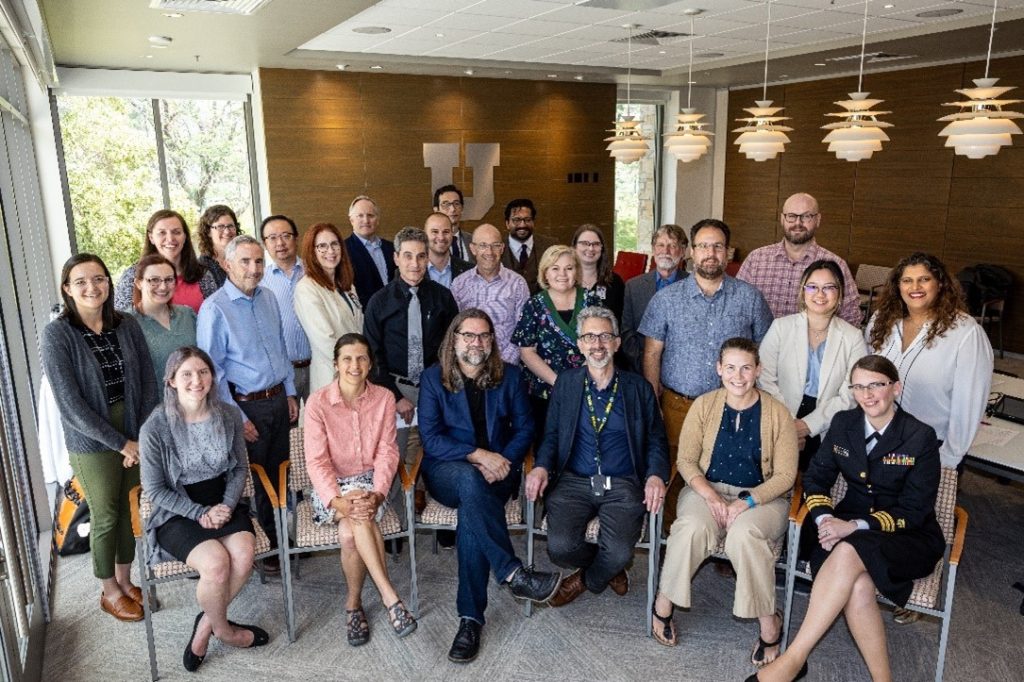Infection
U researchers to lead CDC effort to improve responses to infectious disease outbreaks
The original post by U of U Health can be found here.
The COVID-19 pandemic spotlighted how a rapid and effective response to infectious disease outbreaks is critical for saving lives and protecting communities. With a $17.5 million, five-year grant from the U.S. Centers for Disease Control and Prevention (CDC), University of Utah researchers, in collaboration with Washington State University, are leading efforts to provide data and tools that guide decisions to improve responses to emerging public health threats in the Mountain West. The center is one of 13 to work alongside the CDC’s Center for Forecasting and Outbreak Analytics (CFA) to establish an outbreak response network.
“The key is to have an effective early response to infectious disease threats,” said Matthew Samore, the project’s corresponding principal investigator and professor of internal medicine at the U’s Spencer Fox Eccles School of Medicine. “COVID-19 demonstrated the disruptive power of pandemic infections, but other potential pathogens could be even more damaging.”
On June 28, 2023, experts from the CDC’s Center for Forecasting and Outbreak Analytics met with partners at the University of Utah to showcase the successes of ongoing collaborations and discuss opportunities for the future.
During the pandemic, disease forecasting and near real-time “nowcasting” proved essential for implementing the public health response. These tools advised hospitals on how to prepare for patient surges, assisted health departments in planning vaccine distribution, and informed policies about wearing masks in public. Utah’s new center, called ForeSITE (Forecasting and Surveillance of Infectious Threats and Epidemics), will act in a similar way to protect communities from novel infectious diseases and existing threats, ranging from antibiotic-resistant bacteria to seasonal influenza.
Partnerships with the national Veterans Affairs health system and hospitals and health departments in Utah, Washington, Idaho and Montana will allow organizations to coordinate responses more quickly across the Mountain West region.
ForeSITE is designed to support decision-makers at every stage of a health threat with data-driven analyses, including:
- Automated alerting that warns of a potential need to investigate and respond
- Parameter estimation to assess the magnitude of risk and to characterize transmission
- Scenario modeling that provides evidence-based support in planning for specific contingencies
- Nowcasting and forecasting to monitor a threat’s current status and guide when and how to deploy interventions
- Economic impact assessment that provides insights into a disease’s effects on business and the economy.
“We see this as a public-academic partnership where we can improve modeling systems and integrate them into day-to-day use in individual health care systems and health departments,” said Lindsay Keegan, the project’s co-lead and a research assistant professor in the U’s Department of Internal Medicine. “Then, they can run the models when they need them.”
Other project co-leads include Michael Rubin, professor of internal medicine; Makoto Jones, associate professor of internal medicine; and Eric Lofgren, associate professor in the Paul G. Allen School of Global Health at Washington State University.
Using these tools, local health officials will be able to customize responses to meet the needs of their communities. People who live in crowded cities, for instance, may benefit from different health measures to control disease transmission than individuals who live in less populated rural areas. ForeSITE models also factor in equity considerations by incorporating data on socioeconomic status, disability, and race. The pandemic had disproportionate effects on Americans of different socioeconomic, racial, and ethnic backgrounds, demonstrating an imperative to mount specialized responses for populations that are predicted to be the hardest hit.
“Each of the grantees will help us move the nation forward in our efforts to better prepare and respond to infectious disease outbreaks that threaten our families and our communities,” CFA Director Dylan George said. “We are committed to working alongside these outstanding partners to achieve our goal of using data and advanced analytics to support decision-makers at every level of government.”
The national CFA network represents the first step toward creating a nationwide resource to support more effective response during public health emergencies.
ForeSITE collaborating partners include the following:
- Utah Department of Health and Human Services
- Intermountain Healthcare
- Salt Lake County Health Department
- TriCounty Health
- Weber-Morgan County Health Department
- Davis County Health Department
- Tooele County Health Department
- University of Montana, Montana Department of Public Health
- Idaho Division of Public Health
- Spokane Health Department
- Whitman County Public Health
- Washington State Department of Health
- Pullman Regional Hospital
- Department of Veterans Affairs
- ARUP Laboratories
MEDIA & PR CONTACTS

